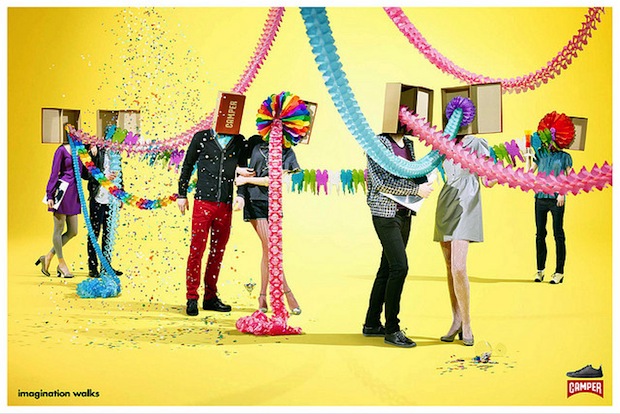What makes a city a creative mecca?


BUENOS AIRES -- While studying digital media at Hyper Island in Stockholm, Emilia Åström, a 28-year-old Swedish digital strategist, was accepted for a spot in the pilot of Kraft Foods's Fly Garage, a series of two-week incubators, held in Buenos Aires, that bring together Kraft marketers, ad agencies and new media experts to work on a single brand. She was supposed to stay for a month but, eighteen months later, she's still here because of the creative atmosphere. And she has no plans to leave.
"In South America, the development is going on right now. It's chaotic and things change all the time, but I think this is good for the creativity," Åström says.
She is far from the only foreigner to think so. It's hard to pinpoint the exact number of foreigners who work in Buenos Aires's advertising industry, but Sebastián Campanario, an Argentine journalist and economist who covers the local creative economy, estimates that 10 percent of the industry's creative workers come from overseas.
They have good reason to come. Several months ago, the Gunn Report, a top advertising industry report that ranks countries by the number of prizes won at award shows, ranked Argentina fifth in its 2012 report. It was the fifth time in the last six years Argentina had been in the top five (it was third in 2007, 2008 and 2009), fighting head to head with much wealthier advertising centers like the U.S. and the U.K. And local agencies like Del Campo Nazca Saatchi & Saatchi regularly are in the top five creative agencies worldwide as ranked by Gunn (in 2012, Del Campo was #2 for its "Dads in Briefs" ads, below).
So how did Argentina -- a country sometimes referred to as the culo del mundo (the ass end of the world) for being so far away from everything -- become a creative mecca that battles with world powers as an equal?
It's a bit of a disaster
Argentina is famous for its regular economic crashes (2001/2 being the latest). But that's been good for creativity. Surrounded by uncertainty, artists and creative professionals are more audacious and risk-taking.
"Since it is less structured, I feel more free here," Åström says. "Europe and North America are more stable, South America is in a state of change."
It also means that creative professionals have to go overseas to look for work when crisis strikes. In 2001, many top Argentine creative professionals and artists moved abroad. When they came back, from 2004 onward, they brought back new clients and new ways of doing things learned in London, Barcelona, and beyond. That's incredibly important for creative growth, says David Galenson, a University of Chicago economics professor who pioneered the economic study of creativity, and led the 2010 founding of the Center for Creativity Economics at UCEMA, a Buenos Aires university.
"There's something in the training of an artist, or an innovator in any activity, you need access to the best people of your own generation while you're being trained," Galenson says.
There's no money
Part of being in a constant state of chaos is not knowing if there will be enough money. This is a core reason why Argentine ad agencies are so creative, according to Hilary Strong, a long-time Unilever brand developer who moved to Buenos Aires and founded a branding agency, The Brand Bean, in 2008.
"There is always a way to get things done. I think they think all the time of different ways around things," Strong, 38, says. "If you're a client, an Argentine will often come up with a very different perspective."
And do it at a good price. While Argentina is fifth overall in the Gunn Report, Campanario notes that because of its lack of capital it wins the gold hands down when it comes to "creative efficiency" -- that is, creative performance (as measured by awards) per money spent.
"For each dollar invested in advertising, there were a ton of prizes in festivals," he says.
The creative agencies are small and agile
In at atmosphere of constant chaos and capital shortages, creative agencies don't have the layers of client managers one sees in London and New York.
"Creatives have a lot more control and client time," Strong says.
And in an agile market dominated by boutiques, young creative professionals have more opportunities to advance quickly. Campanario notes that in Buenos Aires, there are creative directors here who are 25 years old, something one doesn't see as often in the U.S. or Europe.
"You are able to create your own role in new niches more easy. I don't know if I would be giving workshops in digital strategy today if I were still living in Europe," Åström says.
Of course, Buenos Aires has plenty of downsides. The economic uncertainty that spurs creativity also means that many great ideas are never turned into reality. Also, local inflation -- some 25% annually -- is gradually making Argentina less of a bargain for brands looking to buy creative work.
But for now, as Åström notes, Buenos Aires has its charms for young, creative immigrants.
"Relaxed lifestyle, warm climate, many people who work in artistic professions from all over South America and other places, lots of small art and music events, relatively cheap to live, pretty easy to find jobs, good parties, easy to get to know new people," she says. "South American design feels new and exciting."
Photos from Site Marca, YouTube, The Brand Bean
This post was originally published on Smartplanet.com